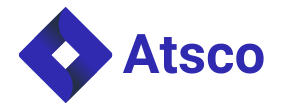In the digital age, ensuring robust security within software systems is paramount. One platform that requires particular attention is Salesforce, especially when it comes to securing Apex, its proprietary programming language. Apex is a powerful tool used for custom development on the Salesforce platform, but with great power comes significant responsibility. Developers and security teams must understand the potential vulnerabilities and the best practices to safeguard their systems.
Apex is integral to the Salesforce ecosystem, allowing developers to execute complex business logic. However, its flexibility can be a double-edged sword. Poor coding practices or insufficient security measures can lead to vulnerabilities, which malicious actors might exploit. Therefore, understanding the intricacies of apex salesforce security is crucial for any organization using this platform.
One primary concern for developers working with Apex is the risk of exposing sensitive data. Salesforce applications often handle large volumes of personal and financial information. Without proper security controls, this data can be at risk of unauthorized access. Developers must implement robust authentication and authorization measures to ensure that only the right users can access specific data.
Moreover, protecting against injection attacks is another critical aspect of securing Apex applications. These attacks occur when untrusted data is sent as part of a command or query, leading to unwanted actions or data exposure. Developers should validate inputs and use parameterized queries to mitigate this risk. Coding defensively and anticipating potential threats are key strategies in maintaining the security of Apex applications.
Security isn’t just about protecting against external threats; internal risks must also be addressed. Misconfigured permissions or overly broad access rights can lead to data leaks or unauthorized actions. Therefore, regular audits and reviews of user permissions and roles are essential. Automated tools can assist in identifying and rectifying these issues before they become significant problems.
In addition to internal practices, staying informed about the latest security advisories and updates from Salesforce is essential. The platform regularly releases patches and updates to address newly discovered vulnerabilities. Implementing these updates promptly ensures that your system benefits from the latest security enhancements.
For organizations needing more comprehensive security solutions, engaging with experts can be beneficial. Companies like DigitSec offer specialized services and tools designed to enhance Salesforce security. By leveraging their expertise, organizations can gain a deeper understanding of their security posture and identify areas of improvement. To learn more about these services, you can visit DigitSec’s official website.
In conclusion, securing Apex in Salesforce is a critical task that requires a proactive and informed approach. By understanding the potential vulnerabilities and implementing best practices, organizations can protect their systems and data from malicious threats. Regularly updating security measures, conducting thorough audits, and utilizing expert resources are all part of maintaining a secure Salesforce environment. As technology continues to evolve, staying vigilant and informed will be key to safeguarding your organization’s digital assets.





